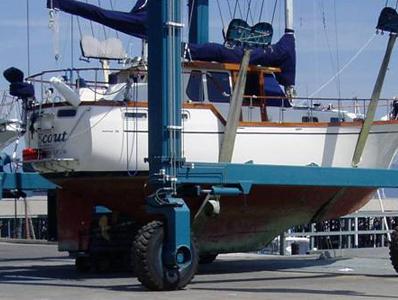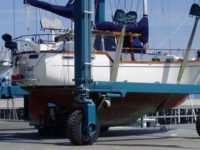Based on the results of the site characterization, Farallon delineated multiple commingled contaminant plumes and performed a cost-benefit analysis of remedial alternatives leading to selection of a cost-effective cleanup action protective of human health and the environment. The cleanup action included decommissioning and removal of two 12,000-gallon-capacity USTs; excavation, segregation, and disposal of approximately 1,200 cubic yards of petroleum hydrocarbon-impacted soil; groundwater management during the excavation activities; and application of an oxygen-releasing compound to provide oxygen-enhanced subsurface conditions, accelerating the natural degradation of residual petroleum hydrocarbons. Farallon facilitated site restoration activities that included engineering design and construction of a soil cement subgrade and reinforced concrete slab capable of supporting a 45,000-pound marine travel lift. Farallon installed a groundwater monitoring network and conducted quarterly sampling for 1 year that demonstrated the success of the cleanup action in achieving MTCA cleanup levels for groundwater. The technical support services provided by Farallon resulted in an efficient and cost-effective cleanup solution in a sensitive marine area that also met the site owner's goal to allow continuing operations of a functional marina and maintenance facility during the cleanup action.
Marina And Yacht Facility

Farallon conducted a detailed site characterization and cleanup action at a marina fueling and yacht maintenance facility in Anacortes, Washington. Site characterization included a direct-push drilling investigation to delineate the extent of impacts of a release of diesel fuel from a UST located adjacent to Fidalgo Bay.
Contact Information
Expertise
Services Utilized
Remediation System Design and Operation
We also operate and maintain remediation systems at client sites. Our engineers rely on our extensive experience to monitor and optimize system performance and minimize the time to achieve cleanup goals. Among the remediation systems we...
Read moreUnderground and Aboveground Storage Tank Investigation and Remediation
Related services include affected groundwater cleanup, vapor intrusion assessment and mitigation, litigation support, tank registration and upgrade requirement evaluation, and spill prevention control and countermeasure planning.
Read more
Contact Us
